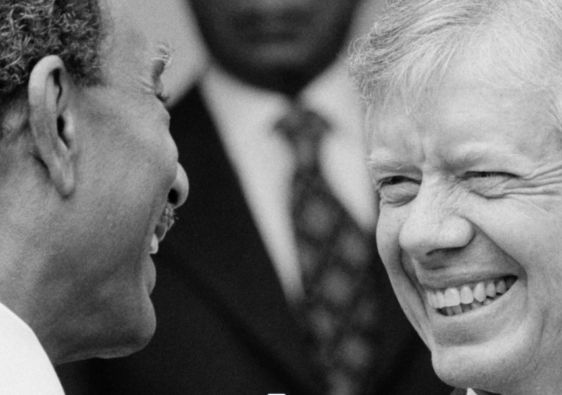A million people were slaughtered in 100 days 30 years ago. Now, Rwandans have chosen a path of reconciliation
The contrast was stark. Outside, there was sunshine, green grass and the warmth of a spring day. Crossing the threshold into what used to be a church, it was dark, cool, and it smelled like decay. Not the decay of rotting flesh — it had been too long for that — but the smell of decay from piles of moldering clothes with blood stains still visible.
Inside one of a number of churches that became mausoleums, I saw, along with the piles of clothing, jumbled heaps of bones and rows of skulls standing as testament to a horrific genocide. When I saw the baby skulls with machete wounds, babies killed in their mothers arms, I began to weep.
Almost 20 years after I visited Rwanda, I still cry at the memories of seeing the aftermath of unspeakable evil.
In 100 days in 1994, between 800,000 and a million people were murdered by their friends, neighbors, priests and even their spouses when Hutus began slaughtering Tutsis across the country. The full scale of the genocide may never be known, as entire communities were wiped out. Thirty years later, mass graves are still being discovered.
During those 100 days of terror, from April 7 to July 19, the rest of the world did nothing.
I remember feeling helpless when I read news stories that year about the genocide. I needed to know as much as I could about what happened, and in the decade following, I read as many books on the genocide as I could find, books that ripped my heart out. Those books included “We Wish to Inform You That Tomorrow We Will Be Killed with Our Families: Stories from Rwanda,” “Machete Season,” “Left to Tell,” “Killing Neighbors” and “Shake Hands with the Devil” by Roméo Dallaire. Dallaire’s experiences as the commander of the U.N. Assistance Mission for Rwanda, being unable to get the global community to help stop the slaughter, broke him. Just reading about it broke me too.
During the 1961 trial for Adolf Eichmann, a Nazi war criminal, writer and philosopher Hannah Arendt coined the phrase “the banality of evil” to try to put words on the efficient, unemotional, routinized way the Nazi regime killed people. There was nothing banal about the killings in Rwanda. They were face-to-face, up close and personal, as neighbors hacked their neighbors to death with machetes or even garden hoes, stabbed them with kitchen knives or sharpened sticks. There was nothing banal about a parish priest appearing to offer sanctuary to some 2,000 of his parishioners and then, after locking the doors, had Hutu militia lob grenades at the church, douse it with fuel, set it on fire, and finally, had the church bulldozed to the ground. Some of the killings were so barbaric, even in the reading of them, that I’ve never talked about them to anyone, including my husband. The depravity was and still is beyond words.
In 1998, four years after the Rwandan genocide, President Bill Clinton told survivors in Kigali, the capitol of Rwanda, “It may seem strange … all over the world there were people like me sitting in their offices, day after day, who did not fully appreciate the depth and the speed with which you were being engulfed by this unimaginable terror.”
“We must have global vigilance,” he said. “And never again must we be shy in the face of the evidence.” A year and a half later, he told the U.N. General Assembly, “It is easy to say, never again; but much harder to make it so.” Indeed.
30 years later
This summer marked the 30th anniversary of the end of the genocide. Rwanda is still finding its way forward, but the reconciliation work it has done as a country is remarkable. Patrick Mason is the Leonard J. Arrington Chair of Mormon History and Culture at USU and recently returned from a study abroad in Rwanda. He wrote and spoke of his experiences there, which were as gut-wrenching as mine 20 years ago. He also had the opportunity to see the healing that is happening.
Mason writes that the country began “one of the most audacious experiments in social reconciliation ever attempted.” The most grievous genocidaires were tried in formal courts, including the police inspector and parish priest that oversaw the destruction of the church mentioned above. “But the killing had been performed by so many that existing jails could not hold them,” he writes, noting that it would have taken “literally decades to prosecute all the perpetrators in Western-style trials.”
“So the Rwandans devised a novel system, based on their own traditional customs. Each community held its own trials in what were known as gacaca courts; 70% were led by women. After those responsible for the killings confessed their crimes or had evidence brought against them, the gacaca courts decided their fate. It might be imprisonment, but more often it was some form of restitution — for instance, a perpetrator might have to rebuild a widow’s home and support her family.”
Rwandans also started “reconciliation villages,” where survivors and former perpetrators were given homes if they promised to live together in peace. One example reported on by The Associated Press is Anastasie Nyirabashyitsi and Jeanette Mukabyagaju, who think of each other as dear friends. Living in the Mbyo Reconciliation Village for the last 19 years, Nyirabashyitsi used to be Hutu and Mukabyagaju was Tutsi; they survived the genocide by hiding in a latrine for two months. Now, there are no more labels, only women who feel like sisters.
Mason, in his 2021 book “Proclaim Peace,” writes that peace cannot be maintained by coercion or force. It must be chosen. Just as Rwanda is choosing it. Just as we all must choose it.
Originally published in the Deseret News



